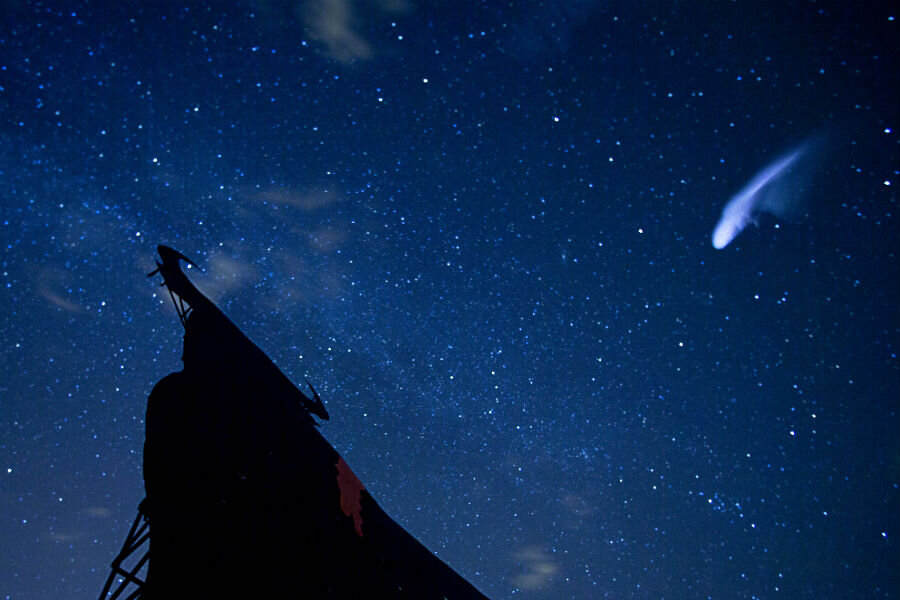Friday night show: Lyrid meteor shower will blaze overhead
Loading...
We are in the midst of a meteor shower, an annual spectacle of shooting stars streaking through the skies at 107,000 miles per hour, bringing with it the blazing trail of comet Thatcher (also known as C/1861 G1).
This particular flurry of celestial activity is known as the Lyrid meteor shower because they give the appearance of originating from the Lyra constellation, home to Vega, the sixth-brightest star in our sky.
While chances of seeing a stunning display this year are dimmed by the full moon, it may still be worth stepping outside as dawn approaches – the best time for viewing – as 10 to 15 stars are expected to burn through the heavens every hour, with some trails remaining lit for minutes.
"People outside the cities, in pollution-free skies should be able to see," Francisco Diego, an astronomer at University College London (UCL), tells The Christian Science Monitor in a telephone interview.
The Northern Hemisphere will be the best place to see the show, explains Dr. Diego, a senior teaching fellow at UCL's Department of Physics and Astronomy and a fellow of the Royal Astronomical Society.
In North America, the shower should be visible all the way from the southern United States up to northern Canada; most of Europe will be able to bear witness (although it will likely be cloudy in London), as well as much of Asia, Hawaii, and Mexico, to name but a few places.
Every April, Earth passes through the moving trail of dust and debris left in the wake of comet Thatcher, speeding round the sun on its 415-year orbit.
"We are travelling at nearly 30 kilometers per second [18 miles per second] around the sun, and when we hit these specks of dust travelling at that speed they burn up in the atmosphere just due to friction," Marek Kukula, public astronomer at the Royal Observatory, Greenwich, told The Guardian. "It is a bit like driving down the motorway through a cloud of midges and they all splat on your windscreen."
The Lyrid meteor shower is by no means the brightest to blaze through our sky, but it is one of the oldest, first thought to have been observed by Chinese astronomers 2,700 years ago, on a night when "stars fell like rain."
And, every 60 years or so, an event known as an "outburst" takes place, when we pass through a particularly dense part of Thatcher's trail and up to 100 meteors flame through our skies every hour.
The brightness of each shooting star depends mostly on its size, usually no bigger than a grain of sand, says Diego. Speed also plays a part, with slower ones appearing brighter because they linger for longer, allowing our eyes to adjust, but most members of a given meteor shower are travelling at the same speed.
One of the most spectacular meteor displays is put on by the Leonids in mid-November, considered some of the fastest shooting stars out there, always bright, and often colorful. And, once every 33 years or so, they mesmerize, blasting our skies with hundreds of thousands of shooting stars every hour, the last one of these storms having taken place in 2002.
But of the more regular variety, the one to look out for might be the Perseid shower, which will light up the night sky as we pass through the trail of Comet Swift-Tuttle.
"The most regular, the most famous and steady is mid-August: the Perseids," says Diego. "I think that's everybody’s favorite."
For now, the Lyrids will be in our skies until the end of the weekend, but the peak is Friday night through Saturday morning. If you're keen to watch, you don't even have to leave your living room: you can watch a live stream of the event through the telescopes of Slooh, a robotic telescope service that calls itself "Space for Everyone."








